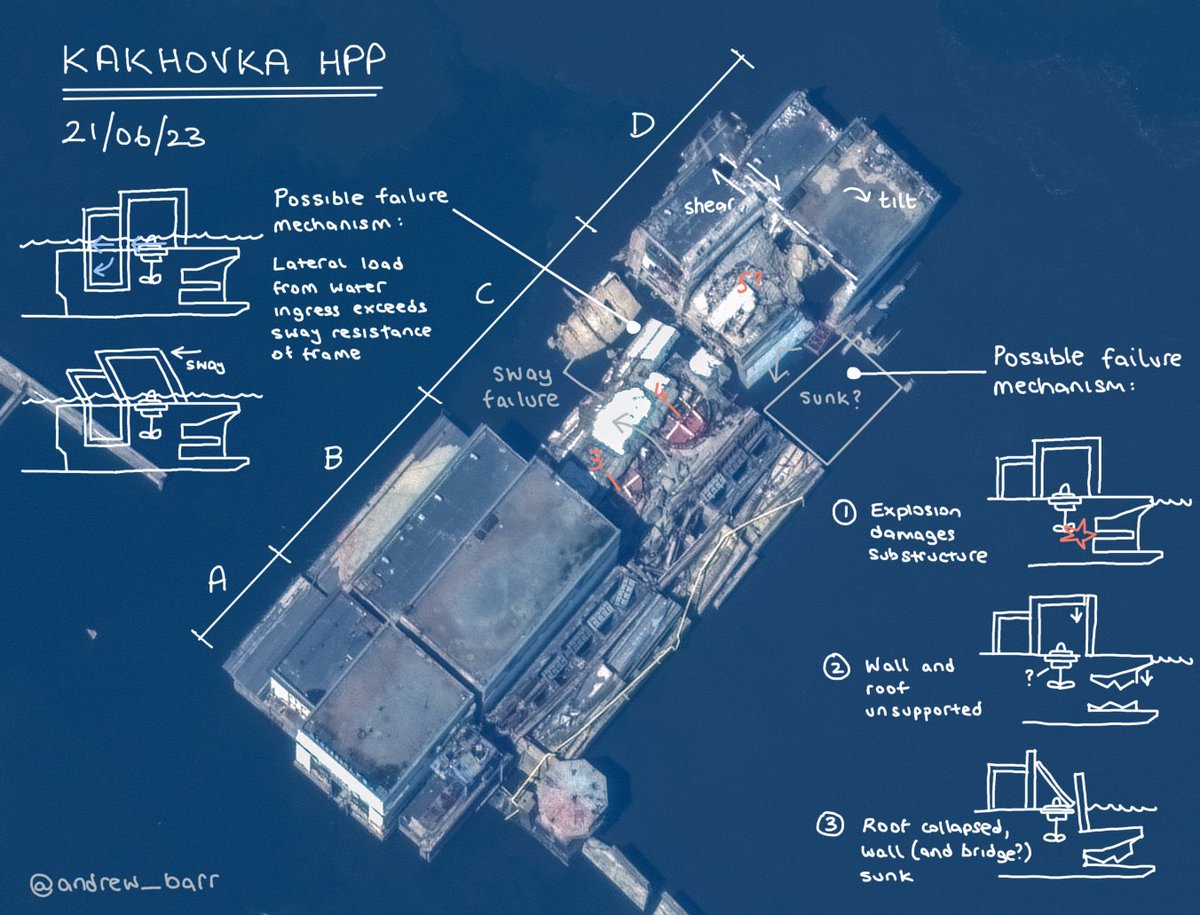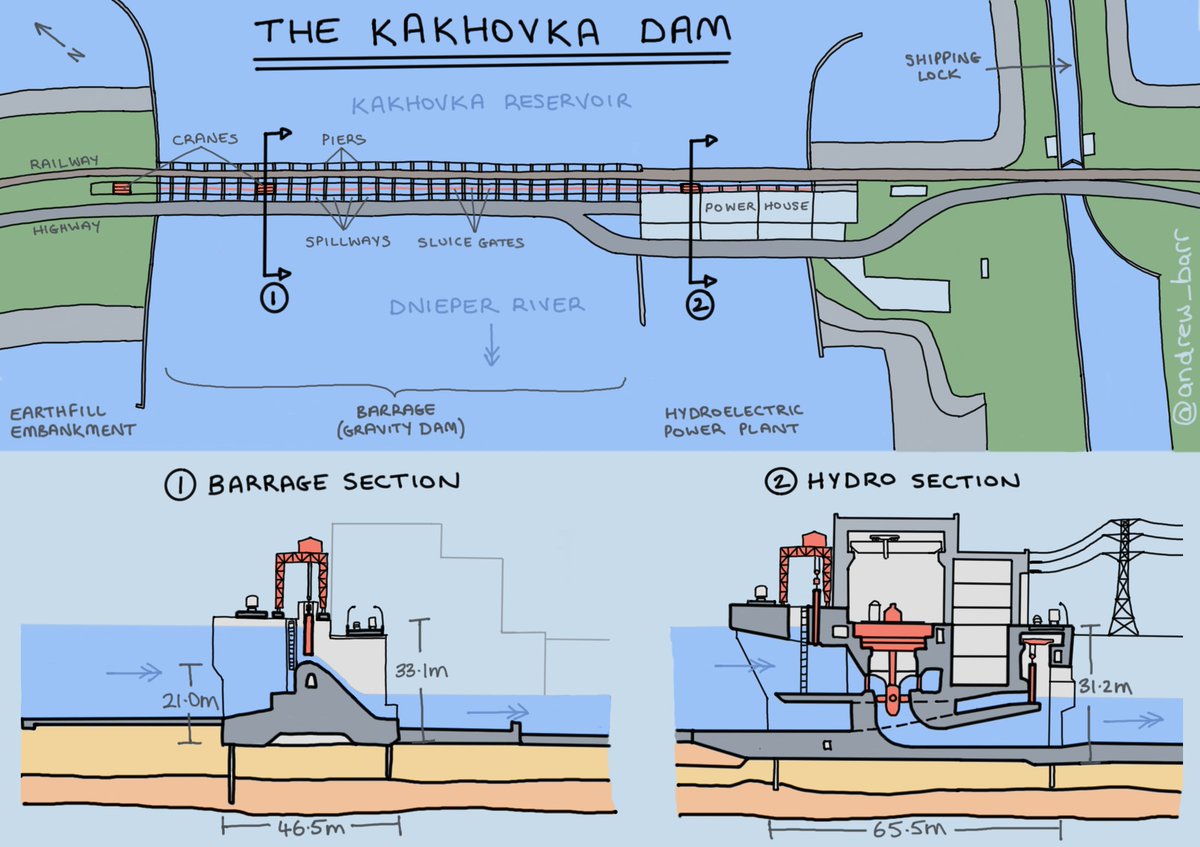A few people have asked why this satellite image of the #CrimeanBridge shows so many damaged sections from a single explosion, so here's a brief Bridges 101 on the likely failure mechanism. 🧵 
https://twitter.com/Osinttechnical/status/1578834056594485250

This section of the bridge is a simple "beam bridge" design. The road deck in each direction is supported on large steel girders, which span between regularly spaced concrete piers. The load on the piers is then transmitted deep into the ground by lots of concrete piles.
1) The explosion causes the failure of one bridge deck near the middle of span 3, clearly indicated by the blackening of the adjacent road surface. (I'll not discuss the specific what and where of the explosion here.) 

2) Rather than having a separate beam for each span, it's common for the deck to be continuous over multiple spans. As the deck buckles and falls into the water, it pulls on the rest of the beam and the bridge deck on both sides shifts towards the damaged area. 

3) There are regular breaks in the continuous beam to account for normal thermal expansion of the bridge deck. You can see some of these expansion joints in this video (and hear the distinctive "clunk clunk" as the wheels pass over them)
https://twitter.com/timand2037/status/1579041488104992768
The expansion joints at spans 1 and 4 don't transmit the pulling force from the falling deck, and so the deck is pulled off its bearings on top of the piers, causing these spans to fail too. 

Span 2 is still standing, but will need to be replaced as it is part of the same damaged beam as spans 1, 2 and 4. Span 5 on the other side of the expansion joint is likely to be ok, if its pier hasn't been damaged by span 4 falling.
Some further thoughts in response to your replies:
https://twitter.com/andrew_barr/status/1579837100480172033
• • •
Missing some Tweet in this thread? You can try to
force a refresh












